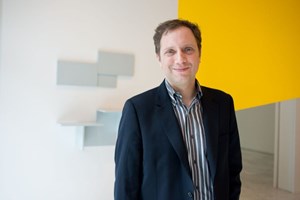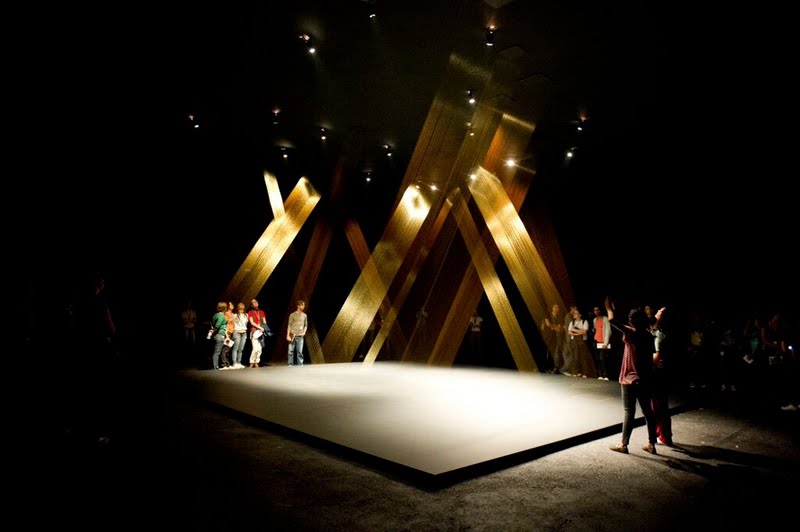
With an eye towards Brazil’s stimulating cultural landscape, Artdependence Magazine interviews Jochen Volz, outgoing Head of Program at Serpentine Gallery in London, former artistic director at Instituto Inhotim, and appointed curator for the next São Paulo Biennial. German-born Volz is a Brazilian veteran, having spent eight years serving as curator and artistic director at the Instituto Inhotim, located in the State of Minas Gerais in Brazil.
With an eye towards Brazil’s stimulating cultural landscape, Artdependence Magazine interviews Jochen Volz, outgoing Head of Program at Serpentine Gallery in London, former artistic director at Instituto Inhotim, and appointed curator for the next São Paulo Biennial.
German-born Volz is a Brazilian veteran, having spent eight years serving as curator and artistic director at the Instituto Inhotim, located in the State of Minas Gerais in Brazil. Volz previously participated in the 2006 São Paulo Biennial, presenting a special section - an homage - dedicated to Marcel Broodthaers. Three years later, he acted as co-curator alongside Daniel Birnbaum for the 53rd Venice Biennale, Making Worlds.
In this interview, Volz shares his deep familiarity with Brazil and his appreciation for practical experiences, giving us a taste for what’s to be expected from the 32nd São Paulo Biennial, taking place in 2016.
Artdependence Magazine: How did you start your career? What drove you to become a curator?
Jochen Volz: I studied art history, education, and communication in Munich and Berlin, and I soon knew that I wanted to work with contemporary art. But it was only when I started working in a gallery and started collaborating closely with artists on the production of art works and exhibitions that I understood that this was what I really wanted to do.
AD: Can you tell us about a particular exhibition that struck a chord with you?
JV: There have been many exhibitions that resonated specifically with my own questions and interests in a given moment, and over time these various exhibition experiences have helped to shape the way I think about art and life. One key experience, amongst others, was seeing Oyvind Fahlström’s “Garden – A World Model” in 1994 as part of the show “Mapping”, at the Museum of Modern Art in New York.
AD: Tell us about your experiences at Inhotim. How did you come to work with this particular institute? Which artists have you worked with?
JV: I decided to move to Belo Horizonte for personal reasons in 2004, but by that time I had already worked with many of the artists present in the Inhotim Collection, including Cildo Meireles, Franz Ackermann, Dominique Gonzalez-Foerster, Janet Cardiff, Olafur Eliasson, Rirkrit Tiravanija, and Rivane Neuenschwander, amongst others. For this very reason, I was invited to help with the installation and production of the presentations of these artists in the very first exhibition of the Inhotim Collection in September of that same year. I was then offered to stay permanently.
Instituto Inhotim has gone through an extra-ordinary transformation over the past 11 years. Not only did we develop an identity for the collection, driven by the question - what could artists do in Inhotim that wasn’t possible elsewhere, and how to avoid doing things that would make much more sense in an urban context. But, we also created an institution that has become an agent for education, social equality, and ecology in the region, fostering critical and creative thinking. Today, Inhotim is one of the most popular tourist destinations in Minas Gerais.

Centro Educativo Burle Marx, photo Marcelo Coelho

Galeria Adriana Varejao, photo Eduardo Eckenfels

Hugo França Bancos, photo RossanaMagri
AD: How did you choose the artworks and artists that would form a part of the Inhotim collection?
JV:The Inhotim collection is a Brazilian collection of international contemporary art that has been made in Brazil and elsewhere.
When describing the Inhotim collection as a ‘Brazilian collection’, I want to point to the fact that certain artistic strategies which have been explicitly formulated in the work of Brazilian artists (from Hélio Oiticica to Cildo Meireles to Rivane Neuenschwander, to name a few) propose a kind of framework for our research and collection activity: the role of the spectator, the concept of the all-surrounding installation, the exploration of scale, and so forth.
Additionally, the setting of Inhotim incites other questions, such as: the ambiguous relation between culture and nature, the perception of the self, orientation and disorientation, different notions of time, the idea of the voyage and the destination, and many others.
Of course, we do not collect thematically, and none of us would even understand any of the above-mentioned ideas as themes. Rather, they are recurring questions that sometimes culminate in an inspiring dialogue between artworks in the collection. Cildo Meireles’ large installation “Através”, for example, has gained a new urgency in the vicinity of Doris Salcedo’s “Neither” and Chris Burden’s “Beam Drop”. And in discussions with my colleagues Allan Schwartzman and Rodrigo Moura about possible acquisitions, these relations between works are always very carefully examined.
Another strategy that we explicitly work with is commissioning site-specific pieces for Inhotim. And it is important to understand that the creation of the collection has always been a collective process, since 2004, involving Allan, Rodrigo and myself, and later also Júlia Rebouças and Inês Grosso, alongside collector Bernardo Paz.

Doug Aitken, SonicPavilion, photo Daniella Paoliello

Lygia Pape, Tteia, photo Daniella Paoliello

Helio Oiticica, Magic Square, photo Rossana Magri
AD: What about the experience of working with a private collector? In what way is it different from working at the Serpentine Galleries?
JV: The difference, in fact, is rather between working for a Collection-based institution like Inhotim in contrast to working with a Programme-driven exhibition gallery like the Serpentine Galleries.
Inhotim is lucky to be far from the urban reality, where every square-meter of an institution has to be activated as much as possible. Inhotim allows us curators to organize exhibitions with a lot of caution, presenting each work under the appropriate conditions. This is great. On the other extreme, the Serpentine Galleries produce an endlessly active schedule: Public and Education programmes alongside at least 8 exhibitions a year and a Serpentine Pavilion. These are opposite forms of operating.
AD: You have been invited to curate the next São Paulo Biennial. What is your opinion on the previous São Paulo Biennial, and what do you think about the present Venice Biennale? Do you think both biennales have indicated the paths that art is presently taking?
JV: Both exhibitions you mention had and have very distinct formats, representing specific approaches on how to work with art and artists. Nonetheless, both exhibitions unite in their promotion of polyphony and certain contradictions. This is an important exercise at present.
AD: More and more art fairs have been popping up every year all over the world. What is your opinion on these fairs?
JV: An art fair is an art fair, an exhibition is an exhibition, and a biennial is a biennial. It is important not to mix things up. But it is probably more interesting to think about new models and platforms for art, beyond the known presentation and circulation formats?
AD: What is your advice for professionals who would like to begin a career as curators?
JV: There have been many attempts by art schools and universities to establish curating as an independent academic field, but I truly believe that the most important ‘school’ for a curator is attending exhibitions, experiencing art and, most importantly, getting to know artists or art collectives - their way of working, thinking, and questioning the world. The relationship between an artist and a curator is one of mutual trust. But trust, just like other aspects of life, is something to be built over time, coinciding with shared experiences, proven expertise and full dedication.
With the increasing professionalization of the art world, the growing number of biennials throughout the world, in addition to commercial galleries taking on responsibilities which in the past have been the mission of museums, and with the dominating power of corporate cultural sponsoring as a new form of marketing, organizing exhibitions or other forms of art encounters has become a more complex task. Curating today also means to actually define and defend the expression of artistic freedom within a political, economic, social and mediatic landscape of ever-growing pragmatism. It means to take a stand for experimentation and the potentials of uncertainty.
Image above: portrait Jochen Volz, photo Daniela Paoliello.

ArtDependence Magazine is an international magazine covering all spheres of contemporary art, as well as modern and classical art.
ArtDependence features the latest art news, highlighting interviews with today’s most influential artists, galleries, curators, collectors, fair directors and individuals at the axis of the arts.
The magazine also covers series of articles and reviews on critical art events, new publications and other foremost happenings in the art world.
If you would like to submit events or editorial content to ArtDependence Magazine, please feel free to reach the magazine via the contact page.